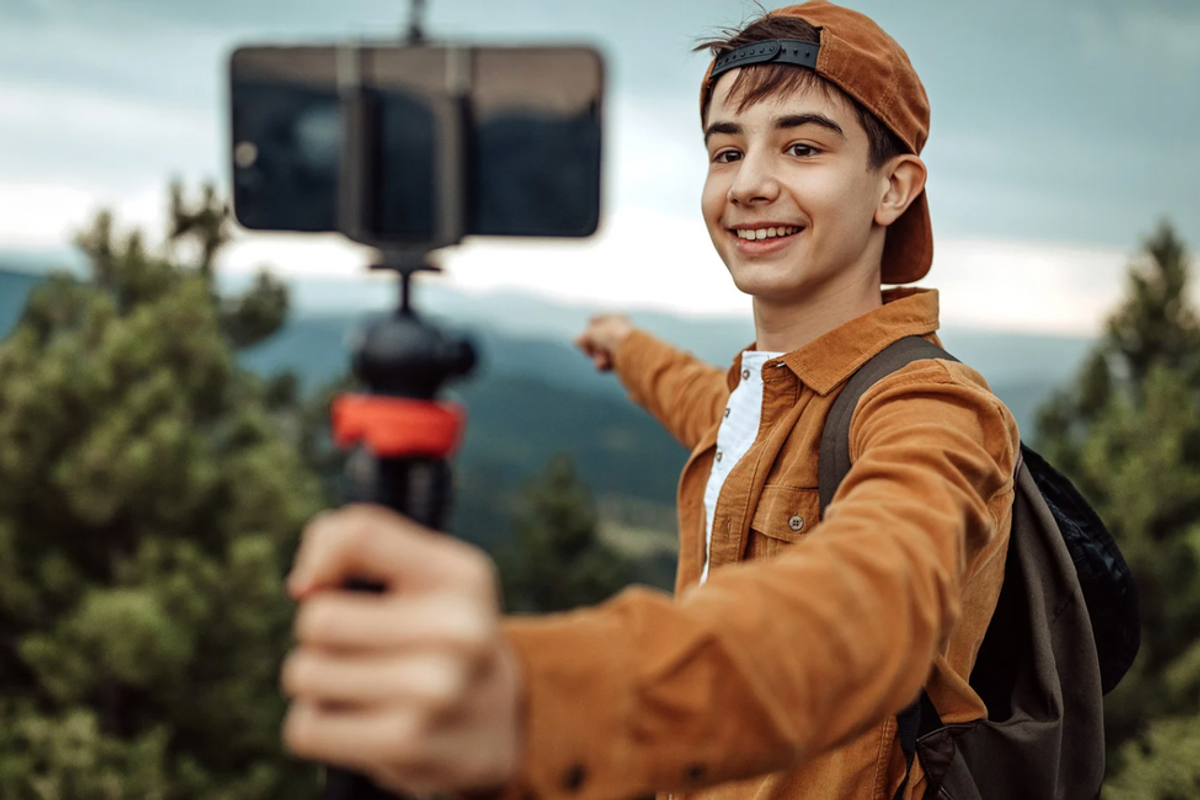Why the once viral advice to change your voicemail greeting if you're lost is absolutely a bad idea
Here's what to do instead.
A widespread myth about changing your voicemail greeting when stranded gets debunked by rescuers.
In 2021, multiple tragic news stories of people being stranded in the wilderness elicited a wave of viral posts sharing some wise-sounding advice for if you're ever stuck somewhere without cell service and a low battery.
The general suggestion was to update your outgoing voicemail message to include your location. One version that went viral reads:
"If ever lost while hiking, stranded with a broken-down vehicle or other emergency situation, if your cell phone battery is low here is a tip that can very well save your life. Change your outgoing voicemail on your phone to a message that gives your approximate location, the time, the date, your situation; lost, out of gas, car broken down, injured, etc... plus any special instructions such as; 'You are staying with the car', 'You are walking towards a town' If your cell phone dies, stops working or loses signal your voicemail will still be working. Anyone calling your phone will hear your emergency instructions. They will know you need help and know where to find you or where to send help."
The problem is, the advice isn't wise after all. Yes, it sounds smart, but a Colorado rescue team explained why it's not.
The Alpine Rescue Team posted its response to the then-viral post on Facebook, writing:
"1. Without a signal (connection to the cell system) YOU CAN'T CHANGE YOUR VOICEMAIL. The voicemail system resides with your cell provider. To change your outgoing message, you have to CALL into your voicemail and then navigate the menus, record a new greeting, confirm the new greeting, etc. YOU CANNOT DO THIS WITH NO SIGNAL.
2. If your battery is low do not waste its power by calling your voice mail—or a friend or relative. Call 9-1-1 for help.
3. If you have no signal, text for help to 9-1-1. Many, if not most, 9-1-1 centers can receive a text.
4. Text takes much less power, is far more likely to get through, will automatically retry many times if you have spotty service, leaves record others can see and can give you an indication that it got thru. BTW, because of the automatic retries, you can compose and hit send on a text and then get your phone as high as possible to improve the chances of getting the message out.
5. Stay put. Okay, if you're lost or broken down and you've called for help (assuming you have signal and battery) please stay in one location—UNLESS YOU MUST MOVE FOR SAFETY REASONS. Changing your location makes our job more difficult. Trying to reach someone whose GPS location we have (within a circle, of course) is faster for us than trying to nail down a moving target. STAY PUT.
6. Maximize battery life. In order to make the battery last longer, turn off everything you do not need. Close all apps. Turn off WiFi and Bluetooth. Don't use your cell phone as a GPS/map device and especially do not use the compass if your phone has one -- the compass feature in some phones is a serious battery drain. Pull out your map and compass and/or use a dedicated GPS unit. You may be instructed, by text, to turn your phone off and text back at a specific time. Also, keep your phone just a little warm with some body heat or a handwarmer."
- YouTube youtu.be
Many people probably think of their voicemail greeting as a recording saved on their phone, but it's not. A fact-check by USA Today, which consulted the top three carriers (Verizon, AT&T and T-Mobile), confirmed that cell service or a data connection is needed to change an outgoing voicemail message. You can do it over Wi-Fii, but that's not helpful if you're stranded on a mountain somewhere. You could change your voicemail greeting before you leave, letting people know where you're going to be adventuring if you feel comfortable with that, but once you're stuck without cell service, there's no changing it.
This is a friendly remind that it's always wise to look for what the actual experts say before passing along a social media post, even if the advice it contains sounds smart initially.

This article originally appeared four years ago.

